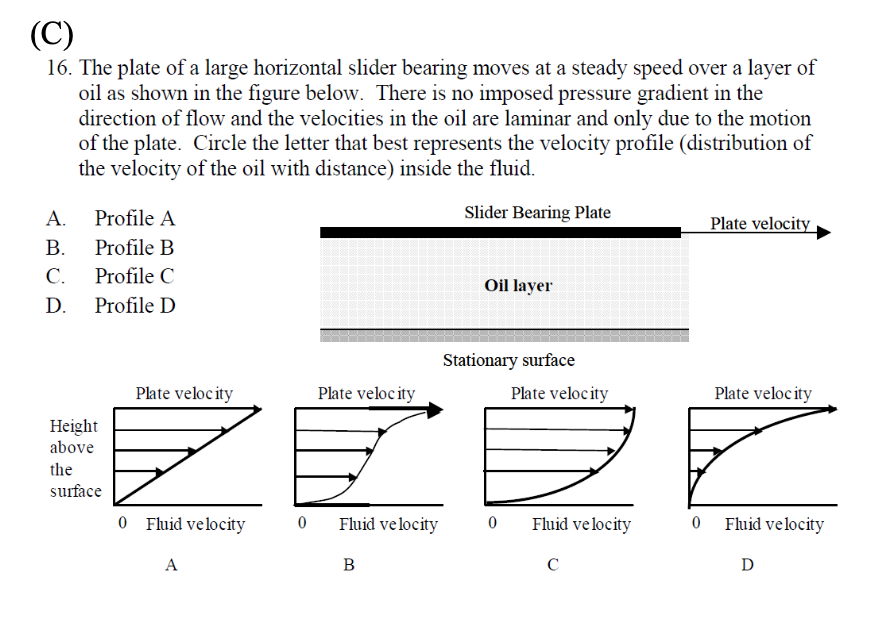Fluid Mechanics Concept Inventory (FMCI)
Purpose
Fluids Mechanics Concept Inventory (FMCI) is commonly used in the context of thermal sciences, where fluid mechanics typically follows thermodynamics in the sequence of courses. Through this assessment process, the curriculum and courses can be adjusted as necessary to ensure that students acquire a solid understanding of the fundamental concepts.
In the paper of Daniel G. F. Huilie (2019), the FMCI consists of four main categories with corresponding sets of questions:
● Statics of fluids: This section includes seven questions (Q7, Q9, Q10, Q12, Q14, Q18, Q30) focused on examining students’ comprehension of static fluid behavior.
● Ideal fluids and conservation laws (Bernoulli, Euler): With ten questions (Q3, Q4, Q6, Q13, Q17, Q22, Q23, Q25, Q27, Q31), this category assesses students’ understanding of ideal fluid properties and the application of conservation laws, such as Bernoulli’s and Euler’s equations.
● External viscous flows: Comprising seven questions (Q5, Q19, Q20, Q24, Q26, Q28, Q29), this section evaluates students’ knowledge of viscous flow phenomena occurring in external environments.
● Internal viscous flows: This category explores students’ comprehension of internal viscous flows and includes six questions (Q8, Q11, Q15, Q16, Q21, Q32).
Population
FMCI is regularly employed in mechanical engineering (ME) courses to assess students’ understanding of fluid statics, pressure measurement, conservation of mass, Bernoulli’s equation, and conservation of momentum.
Typical Performance
We have yet to carry out an analysis of the LASSO data for typical performance. However, a previous study by Watson et al. (2015) examined the performance of civil engineering students on the existing fluid mechanics concept inventory. The results of their study are presented below:

Validity
The FMCI was originally developed in 2003. Its validation has predominantly centered around college students. While certain items within the inventory exhibited relative weaknesses compared to others, overall, the tool demonstrated a reasonable level of reliability and validity. It encompasses the study of both the mechanics and dynamics of fluids, building upon fundamental principles of physics and Newtonian mechanics. For further reference, relevant articles are listed below:
● Martin, J., Mitchell, J., & Newell, T. (2003, November). Development of a concept inventory for fluid mechanics. In 33rd Annual Frontiers in Education, 2003. FIE 2003. (Vol. 1, pp. T3D-T3D). IEEE.
● Martin, J. K., Mitchell, J., & Newell, T. (2004, October). Work in progress: Analysis of reliability of the Fluid Mechanics Concept Inventory. In 34th Annual Frontiers in Education, 2004. FIE 2004. (pp. F1F-3). IEEE.
● Watson, M. K., Mills, A. R., Bower, K. C., Brannan, K., Woo, M. H., & Welch, R. W. (2015, June). Refinement of a concept inventory to assess conceptual understanding in civil engineering fluid mechanics. In 2015 ASEE Annual Conference & Exposition (pp. 26-1322).
● Huilier, D. G. (2019). Forty years’ experience in teaching fluid mechanics at Strasbourg University. Fluids, 4(4), 199.
Research
The research conducted with the FMCI is extensive. We recommend reviewing the citations listed under validation to find articles of interest.
Example LASSO Report
Please follow this link to our example report for concept inventories.

